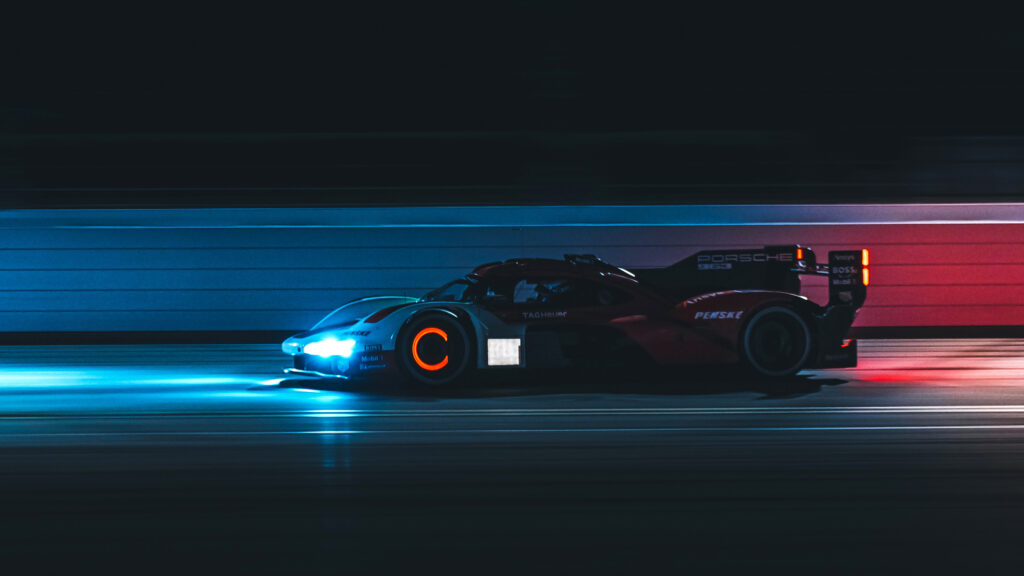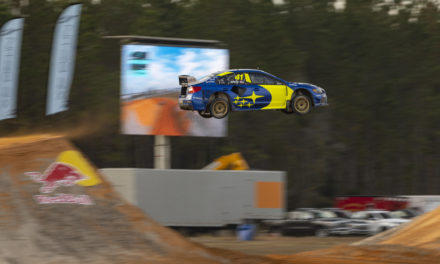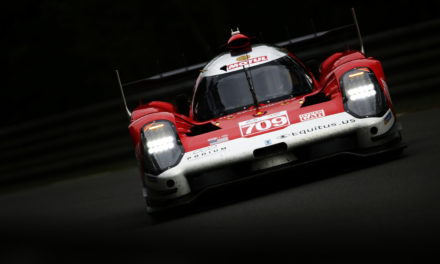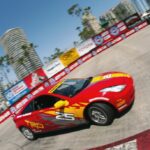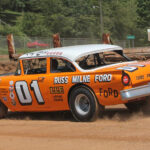Last Thursday, dusk turned to darkness at Daytona International Speedway, and an all-new fleet of top-flight, scratch-built race cars took to the 3.8-mile course under the lights.
For the teams that race all day (and, often, all night), this off-season has been an endurance run of its own. Each is gearing up for the biggest clean-slate wipe in recent memory. The collection of winged warriors at the top of the road-racing grid have undergone an immense change—new manufacturers, new hybrid engines, and even a new class name.
These “Le Mans Daytona h” (LMDh) cars—called Grand Touring Prototypes (GTP) here in America—will race next season, starting with January’s Rolex 24 at Daytona. From there, the drivers and teams will split and shuffle rosters before embarking on their campaign in either the IMSA WeatherTech SportsCar Championship or the Euro-based World Endurance Championship (WEC).
Ahead of the 2023 season, Cadillac, Porsche, BMW, and Acura were present at Daytona, vetting their novel LMDh cars and brand-new powerplants. The Thursday session marked the first time teams tested at night. Each of the four engines will be governed to about 670 horsepower and use a common hybrid system that allows the cars to get on and off pit road under battery power. (Not-so-fun fact: Given the relative newness of these systems, and the anticipated gremlins, there is a chance that we could see a slower class claim an overall win in the Rolex 24.)
Even though they share an electric hybrid system, all four of these marque-specific engines are quite different. From a distance—and in the dead of night—a trained ear can actually tell which car is passing by from the sound.
The Cadillac uses a naturally aspirated 5.5-liter V-8. Over a Zoom interview last week, Laura Wontrop Klauser, GM sports car racing manager, said the piece is “all new.” Or, mostly new.
“Just like everyone else, we did not have much time to make a decision as to what we wanted to do with this car, so a lot of it is leaning on the experience we’ve had for decades—racing with Chevrolet and what we learned with the Cadillac DPi car [which is being replaced by the GTP]. And as quickly as we could.”
She added: “We did work on packaging options for multiple engines. And after we reviewed what the requirements were for this platform, it made sense to carry forward with the V-8 architecture. This is a new engine for this car, but leaning on the past just made sense, especially with running overseas in WEC. I think we’re bringing America over pretty loud and strong with our Cadillac, and we’re proud of that.”
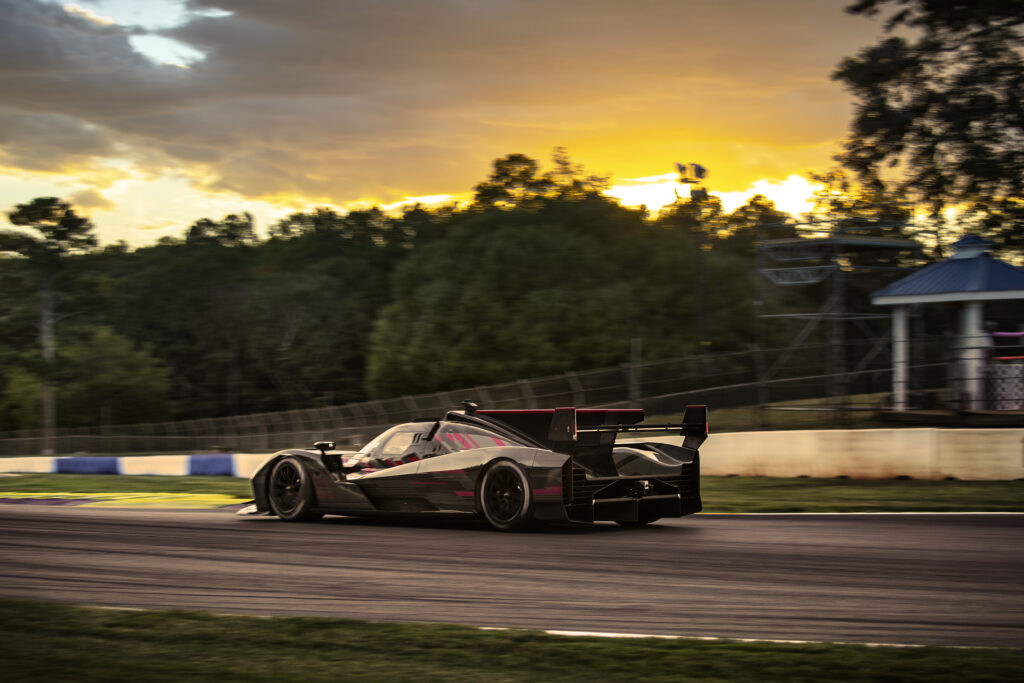
The Cadillac V-LMDh race car testing on track at Michelin Raceway Road Atlanta (Richard Prince/Cadillac Photo).
Indeed, it is loud, and with the biggest engine in the class, the sound is fierce, almost guttural—a bit like a NASCAR stocker.
Across the garage, Porsche was testing its new beast. Urs Kuratle, director of factory racing for the LMDh program, said that: “Like the other three, we had a wide range of engines that it would be possible to make something out of. Packaging was one thing, the rules were another, and economics were a consideration as well.” Porsche opted for a 4.6-liter, twin-turbo V-8. It sounds like a V-8. However, it’s far more high-pitched than the Cadillac’s and willing to rev to the moon.
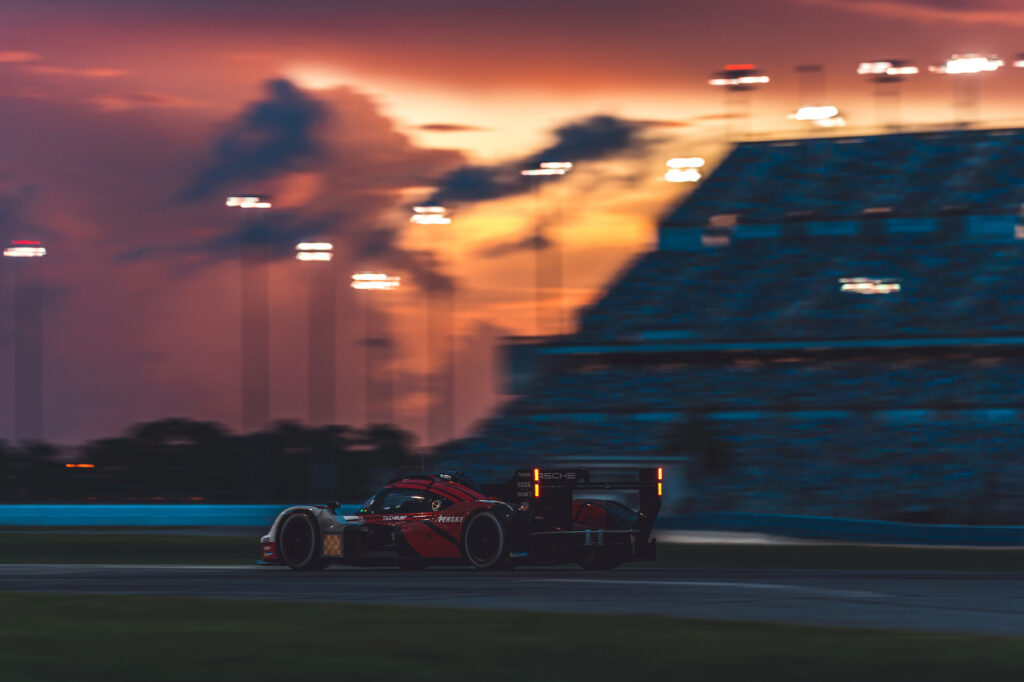
Porsche’s prototype at Daytona, last week. (Porsche)
BMW also chose a twin-turbo V-8. Its mill is slightly smaller, displacing 4.0 liters. “We had three elements we had to combine: Brand DNA, and what was best suited to the regulations, and we had to combine what was realistic and within reach,” said BMW’s LMDh project leader Maurizio Leschiutta.
“We came up with a V-8 with twin-turbo architecture, which is the same architecture we used in our M5 Competition road car. It arose from an existing powerplant so we could cut some of the development time.” The BMW sounds like an unmuffled M5 Competition might, refined with a tinge of ripping fabric.
Acura went a completely different route. Honda has no V-8, and the Acura performed quite well with the V-6 architecture in the DPi prototype class, winning the 2022 IMSA championship.
During a recent interview with David Salters, president of Honda Performance Development, he explained to us how the powerplant was born. “We started with a clean sheet of paper, and asked, ‘What do we need to make the best racing car?’ We settled on a V-6, a 2.4-liter twin-turbo racing engine.” High-winding and a bit shrill—the Acura sounds wildly different compared to the other three engines.
Salters paused at the end of his answer. Then, he added something that positively resonated.
“We had in the back of our minds is this may be the last engine we ever make for racing,” referencing the electric era that undeniably, inexorably approaches. The brief that Salters gave the engineers and designers went something like this: “Let’s do the best we can, because it may be the last time we put pen to paper for real racing.”
“We wanted to celebrate all the efforts and learnings that we’ve gathered, and try to stitch it all together,” he added. “If it’s the last one we make, we tried to put everything we could into it.”
The season-opening Rolex 24 at Daytona is the toughest audition imaginable for four manufacturers whose GTP cars barely share a single part with last year’s DPi racers. Before the race, teams will have another go on the Florida track’s high banks for the The Roar Before the Rolex 24 mandatory test session (January 20–22).
Then, for these brand-new prototypes and their eclectic engines, it will be off to the races.
Check out the Hagerty Media homepage so you don’t miss a single story, or better yet, bookmark it

